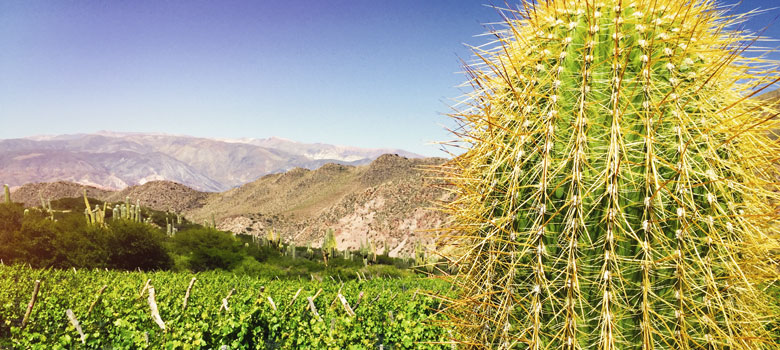
Life
Tasting At The Top Of The World
I’m in a ute driven by vintner Claudio Zucchino, bouncing along a stone track when Finca Moya, finally comes into view. At 3,329 metres above sea level, it is the world’s highest vineyard. Claudio’s cellar, housed in a disused mine 400 winding metres further up the mountain, shares the same accolade. That’s where we’re headed, to taste Uraqui, his tri-varietal red blend.
Welcome to Jujuy (pronounced hoo-hoo-ee), a vibrant province in northwest Argentina that borders Bolivia. The light is so pure here that clouds take on a luminous glow and the mountainous landscape is genuinely breathtaking – and not just because its altitude soars past 2,500 metres.
Extreme vines
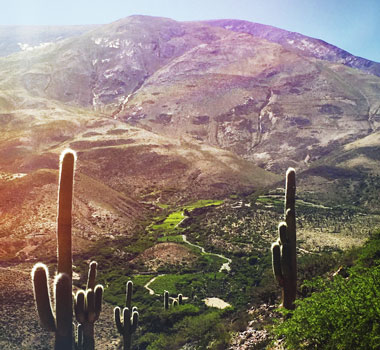
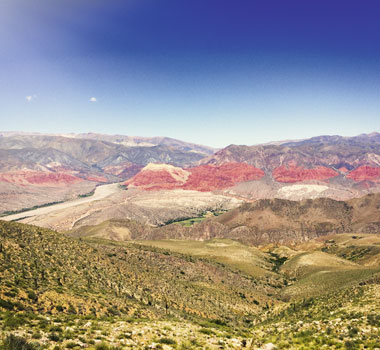
While the Quebrada de Humahuaca gorge, a Unesco world heritage site that runs 96 miles alongside the Río Grande river, has always ensured the Aymara indigenous people’s agricultural success, grapes never played a role – until pioneering vintner Fernando Dupont tackled the challenging terroir in 2004 and planted Syrah, Malbec, Tannat and Cabernet Sauvignon near Maimará at 2,400 m above sea level. Others, such as Viñas del Perchel and Bodega Tukma, followed suit and by 2015, the Quebrada de Humahuaca had been granted Geographical Indication by the INV wine institute. A new, extreme, Argentine wine region was born.
Finca Moya
Argentina is renowned for its altitudinous mountain wines with Malbecs from Uspallata and La Carrera in Mendoza toeing the 2,000-metre mark. Until now, the Altura Máxima vineyard belonging to Donald Hess’ Colomé winery in Payogasta, Salta province had been credited with the title of world’s highest at 3,111 metres high. But Jujuy and Claudio have stepped up to break new terroir extremes. Resolute that Jujuy’s identity must shine through in Uraqui, its very name translating as ‘terroir’ in the Aymara language, the vintner is vehemently against using oak: “Why would I want any external influence on my wine?”
With Marcos Etchart, one of Argentina’s most altitude-savvy winemakers from Cafayate, San Pedro de Yacochuya winery, on board, Claudio planted Malbec, Merlot and Syrah at Finca La Colorada (2,750 metres) and at Finca Moya (3,329metres) as well as some Cabernet Franc and Sauvignon Blanc.
A sky-high tasting
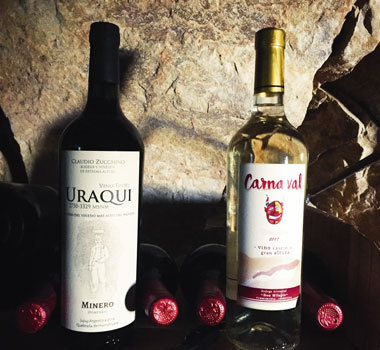
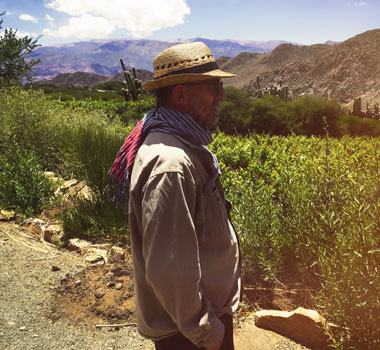
It takes an hour to zig-zag four and a bit miles up the mountain to the latter vineyard. Cacti start thinning out up at Moya, yellow spines contrasting against the soft-leaved vines. Because this area benefits from cool breezes and thermal amplitude, there’s no need for pesticides or fungicides, meaning Claudio manages certified organic vines with ease. One scourge, however, are the local guanacos (camels) rather too fond of Claudio’s thick-skinned grapes.
Unlocking the double doors to the mountain, Claudio sets up some portable lighting and a table, then whips out some goat’s cheese, sliced apple and crystal. In my glass, the Uraqui 2016’s violet hues glistening with lustful promise. At first, the nose is intense and stuffed with raspberry, before wafting away. The mouth is direct, an intense fruit injection. But with time, as the wine adapts to the oxygen levels (or, lack of them), the nose makes a comeback to offer up more mineral and floral notes, while the well-balanced mouth rounds out and converts some of the berries and red fruit into vegetable, bell pepper notes. This view, this moment is mind-blowing… a sky-high tasting.